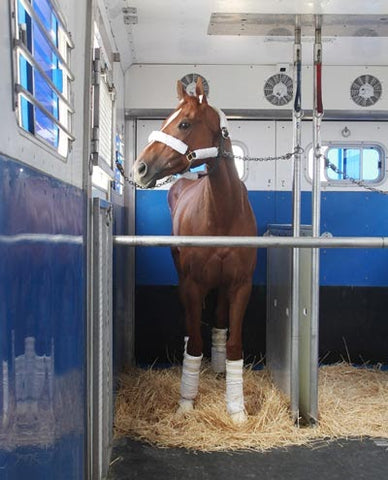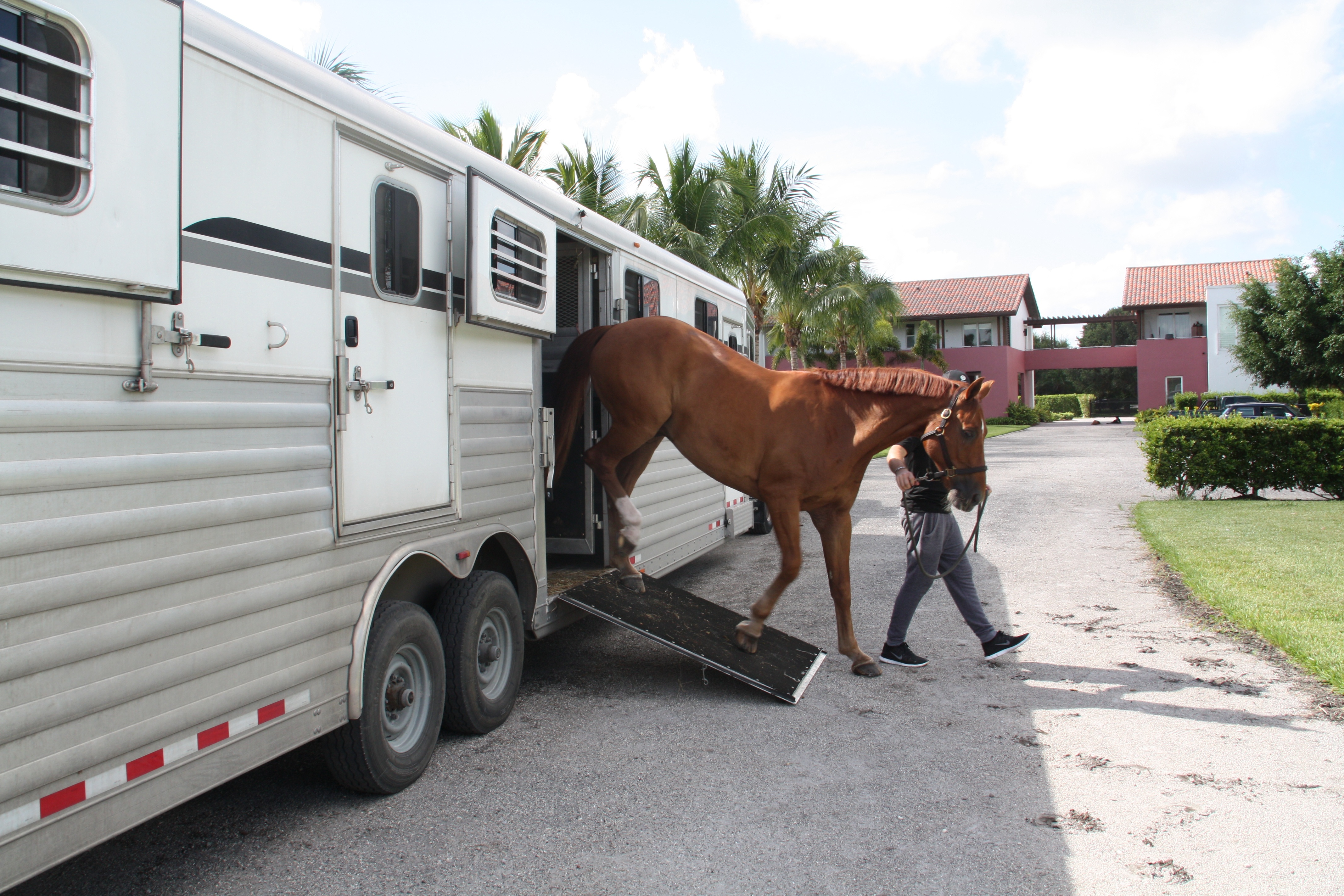Are you ready to embark on an exciting long distance ride with your horse? There’s nothing quite like the feeling of exploring new trails and covering vast distances on horseback. But before you hit the road, there are a few important steps you should take to ensure that both you and your horse are well-prepared for the journey ahead. In this article, we’ll discuss the essential aspects of preparing your horse for a long distance ride, so that you can have a safe and enjoyable adventure. Ready to learn more? Read on!
When it comes to long distance rides, one of the key factors to consider is the physical fitness of your horse. Just like you would train for a marathon, your horse needs to be conditioned to handle the demands of a long ride. This includes gradually increasing the distance and intensity of your horse’s exercise routine, as well as providing proper nutrition to support their energy levels. Additionally, it’s crucial to consider your horse’s overall health, including regular veterinary check-ups and vaccinations. By taking the time to properly condition and care for your horse, you’ll be setting yourself up for a successful and enjoyable long distance ride. To delve even deeper into this topic, stay tuned for our upcoming blog post on “Preparing Your Horse for a Long Distance Ride” on horsebackridingdude.com!

Preparing Your Horse for a Long Distance Ride
Long distance rides can be a rewarding and adventurous experience for both you and your horse. However, embarking on such a journey requires careful preparation to ensure the safety and well-being of your equine companion. In this article, we will discuss the essential steps to get your horse ready for a long distance ride, covering areas such as physical fitness, training, nutrition, equipment, and mental preparation.
Understanding the Importance of Preparation
Before setting off on a long distance ride, it is crucial to understand the importance of preparation. Your horse’s well-being should always be your top priority, and taking the time to properly prepare will help prevent injuries, exhaustion, and other potential issues that may arise during the journey. Adequate preparation will also enhance the overall experience for both you and your horse.
Assessing the Physical Fitness of Your Horse
One of the first steps in preparing your horse for a long distance ride is to assess their physical fitness. A horse that is not in good physical condition is more prone to injuries and fatigue. Schedule a veterinary check-up to ensure your horse is healthy and fit for the journey. Consider factors such as age, breed, and any pre-existing conditions or injuries that may affect their ability to handle long rides.
Creating a Training Plan
Once you have assessed your horse’s physical fitness, it’s time to create a training plan. Start by gradually increasing their exercise regimen to build stamina and endurance. Incorporate a mix of flatwork, hill work, and trotting or cantering to help develop the muscles needed for long distance rides. Include rest days in their training plan to allow for recovery and prevent overexertion.
Gradually Increasing Mileage and Intensity
When training your horse for a long distance ride, it is essential to gradually increase the mileage and intensity of their workouts. Start with shorter rides and gradually increase the distance over time. This will allow your horse’s muscles, tendons, and ligaments to adapt and strengthen without risking injury. Keep an eye out for any signs of fatigue or discomfort during training, as this may indicate the need for adjustments in the plan.
Ensuring Proper Nutrition and Hydration
Proper nutrition and hydration are crucial for maintaining your horse’s health and well-being during a long distance ride. Consult with a equine nutritionist or your veterinarian to determine the best diet for your horse’s specific needs. Ensure they have access to fresh, clean water at all times, especially during breaks and rest stops. Consider providing high-quality forage or hay during the ride to keep their digestive system functioning properly.
Monitoring for Signs of Overexertion
During the training and the actual ride, it is vital to continually monitor your horse for signs of overexertion. Pay attention to their breathing rate, heart rate, and overall behavior. Excessive sweating, labored breathing, stumbling, or a sudden decrease in performance may indicate that your horse is pushing their limits. Take breaks when needed, allow them to rest and recover, and never push your horse beyond their capabilities.
Choosing Suitable Tack and Equipment
Choosing suitable tack and equipment is essential for the comfort and well-being of your horse during a long distance ride. Ensure that the saddle, bridle, and any other equipment fit properly and do not cause discomfort or rubbing. Invest in high-quality gear that is appropriate for long rides, considering factors such as weight distribution, padding, and breathability.
Fitting the Saddle Correctly
Proper saddle fitting plays a significant role in your horse’s comfort and preventing soreness or back issues during a long distance ride. Consult with a professional saddle fitter to ensure the saddle is correctly fitted to your horse’s unique shape and conformation. Consider using a saddle pad or numnah to add extra cushioning and distribute pressure evenly.
Selecting the Right Bit and Bridle
The bit and bridle you choose for your horse can greatly impact their comfort and communication during a long distance ride. Select a bit that your horse is comfortable with and responds well to. Trial and error may be necessary to find the right fit. It is important to prioritize communication and partnership with your horse, so choosing equipment that promotes relaxation and responsiveness is crucial.
Protecting Your Horse’s Hooves
Your horse’s hooves are their foundation, and protecting them during a long distance ride is essential. Regular hoof care and maintenance should be a part of your routine, including trimming, shoeing, or applying hoof boots if necessary. Be mindful of the terrain you will be riding on and consider using protective boots or pads to prevent injury or discomfort.
Dressing Appropriately for the Ride
Just like you would dress appropriately for a long ride, your horse needs the right attire as well. Consider investing in breathable and moisture-wicking materials to keep your horse cool and comfortable during the journey. Protect them from excessive heat or cold by using fly sheets, blankets, or appropriate layers. Also, ensure that the gear you use is properly fitted and does not restrict your horse’s movement.
Packing Essential Supplies and Equipment
Before heading out on a long distance ride, it is important to pack essential supplies and equipment. This includes items such as first aid kits, hoof care tools, fly spray, emergency contact information, navigation tools, and enough food and water for both you and your horse. Be prepared for unexpected situations and ensure you have the necessary equipment to handle any potential issues.
Planning for Rest and Recovery Stops
During a long distance ride, it is crucial to plan for regular rest and recovery stops. Allow your horse to rest, graze, and recover their energy. Provide them with a comfortable area to lie down, if possible. Use this time to perform basic checks on their overall health and well-being, and address any minor issues or concerns that may have arisen during the ride.
Understanding the Role of Mental Preparation
In addition to physical preparation, mental preparation is equally important for both you and your horse. Long rides can be mentally challenging, so gradually expose your horse to different environments, obstacles, and situations they may encounter during the journey. Build their confidence and trust through consistent, positive training methods. Likewise, mentally prepare yourself for the challenges that may arise, and remain calm and focused throughout the ride.

Conclusion
Preparing your horse for a long distance ride involves careful planning and consideration of various factors. By understanding the importance of preparation, assessing your horse’s physical fitness, creating a training plan, ensuring proper nutrition and hydration, monitoring for signs of overexertion, choosing suitable tack and equipment, protecting your horse’s hooves, dressing appropriately, packing essential supplies, planning for rest stops, and understanding the role of mental preparation, you can set yourself up for a successful and enjoyable long distance ride.
Remember, taking the time and effort to properly prepare both yourself and your horse will greatly contribute to a safe and memorable experience. Enjoy the journey and cherish the bond you share with your equine partner. Safe travels!
Key Takeaways for a Successful Long Distance Ride:
- Assess your horse’s physical fitness before embarking on a long distance ride. Create a training plan that gradually increases mileage and intensity.
- Ensure proper nutrition and hydration for your horse throughout the ride.
- Monitor for signs of overexertion and provide necessary breaks and rest.
- Choose suitable tack and equipment to ensure comfort and prevent discomfort.
- Protect your horse’s hooves with regular maintenance and appropriate gear.
- Dress both yourself and your horse appropriately for the ride.
- Pack essential supplies and equipment for any potential situations or emergencies.
- Plan for regular rest and recovery stops to allow your horse to recuperate.
- Understand the importance of mental preparation and build trust and confidence with your horse.